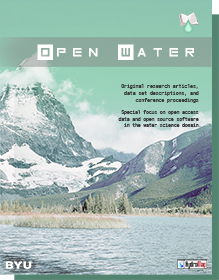Article Title
Trace metal transport modeling using OpenMI: a case study of Zenne river, Brussels Belgium
Abstract
In 2000, the European Water Framework Directive was developed, requiring a good ecological status for all surface waters in all member states by 2015 (EC, 2000). In order to achieve this, Environmental Quality Standards (EQS) for several substances and pollutants have been laid down (EC, 2008).
Since then, large investments were made for the management of the wastewaters of Brussels. This improved the water quality flowing into the river Zenne (Garnier et al., 2012). Despite these investments, the river still receives high loads of pollutants, especially considering the low discharge of the river and the water quality downstream from Brussels does not comply with the requirements set by the EU-WFD. It is in this context that an interuniversity, multidisciplinary research project ‘Good Ecological Status of the river Zenne (GESZ)’ was launched to evaluate the effects of the wastewater management plans in the river basin on the ecological functioning of the river. With this project, different water quantity and quality processes need to be considered: the hydrology in the river basin, the hydraulics in the river, in the canal and in the sewers, erosion and sediment transport, the carbon-nitrogen- phosphorus (C-N-P) cycle, the transport of trace metals and the transport and decay of faecal indicator bacteria. In such a framework, dynamics of trace metals needs to be considered. In the 2011 report of the Flemish Environment Agency (VMM), several metals, such as zinc, arsenic and cadmium had high concentrations in water surfaces under their jurisdiction. Nevertheless, average concentrations of metals except for arsenic have decreased by more or less 50% in the last 10 years (Steertegem, 2011).
BYU ScholarsArchive Citation
Punzal, Chrismar; Shrestha, Narayan Kumar; Leta, Olkeba Tolessa; De Fraine, Bruno; van Griensven, Ann; Elskens, Marc; and Bauwens, Willy
(2013)
"Trace metal transport modeling using OpenMI: a case study of Zenne river, Brussels Belgium,"
Open Water Journal: Vol. 2:
Iss.
1, Article 12.
Available at:
https://scholarsarchive.byu.edu/openwater/vol2/iss1/12
